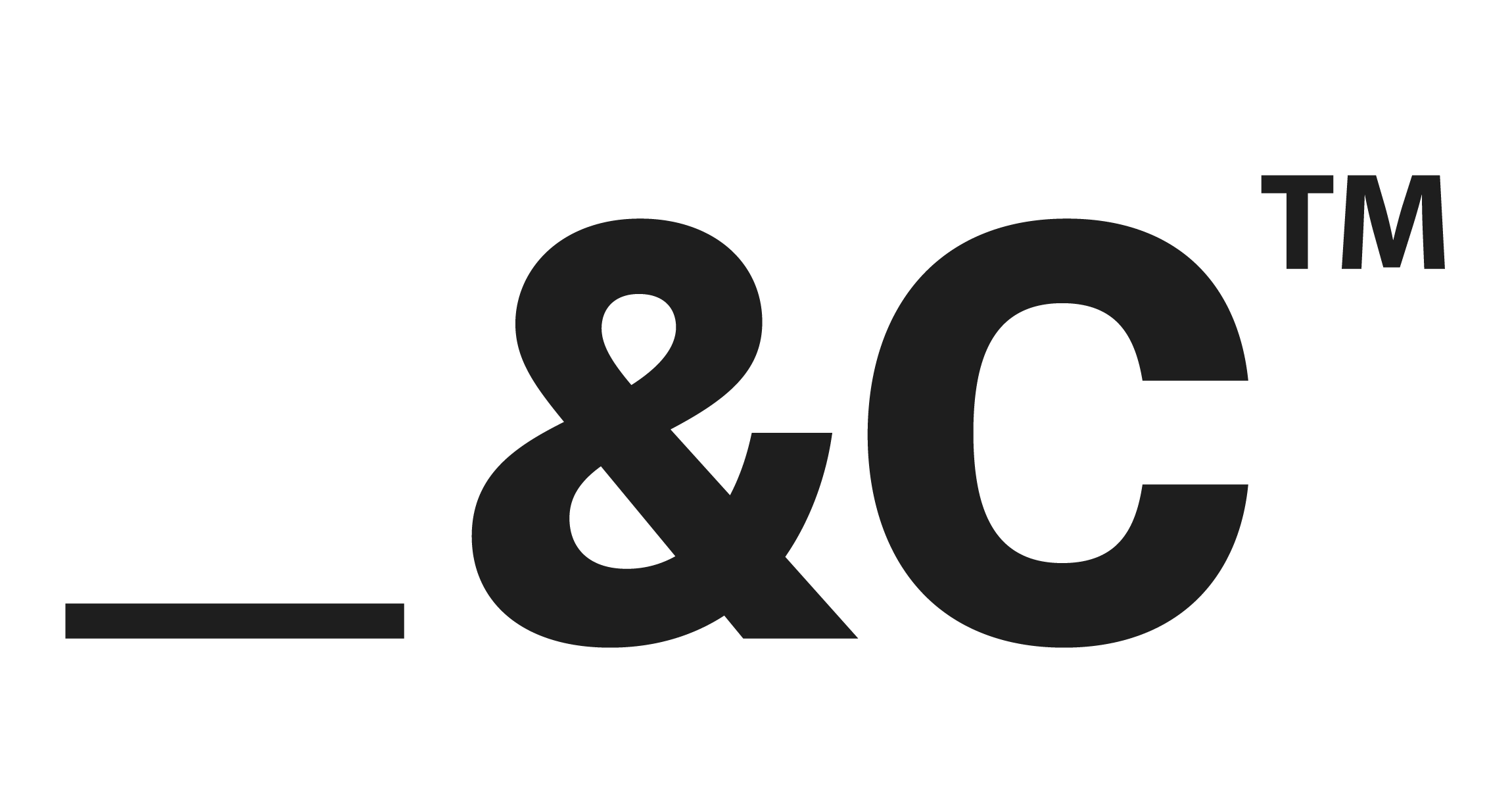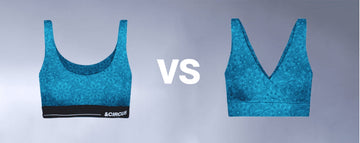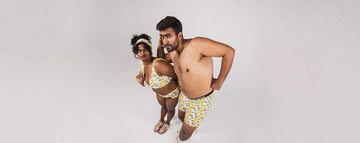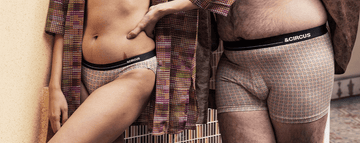Quick Listen:
In the humid sprawl of a New York summer, where the air clings like a second skin, men are rethinking their wardrobes. Gone are the days when fashion meant stiff collars and heavy fabrics that trapped heat. Today, the modern man whether he's navigating boardrooms or biking through Brooklyn craves clothing that breathes as effortlessly as he does. This shift isn't just about comfort; it's a cultural pivot toward smarter, more sustainable choices. Breathable fabrics like micromodal, bamboo, and performance blends are rewriting the rules of men's fashion, blending style with function in ways that feel both luxurious and necessary.
Uncomfortable underwear shouldn't steal your confidence. At Andcircus, we craft ultra-soft, sustainable Lenzing Modal Micro® innerwear for every body, XS to 5XL. From briefs to bras, our custom packs fit you perfectly. Shop risk-free with our 100% satisfaction guarantee and embrace comfort that includes everyone. #LoveEveryBody. Shop Now!
Breathable Fabrics Lead the Way in Men's Fashion Trends
The rise of breathable materials is no fleeting fad. It's a response to how men live now active, urban, and increasingly conscious of their environmental footprint. Athleisure, a term coined from “athletic” and “leisure,” has exploded since the mid-2010s, driven by the popularity of yoga pants and the demand for versatile clothing. Tracksuits, hoodies, leggings, and sneakers once confined to gyms are now staples of everyday wear, offering a “fashionable, dressed-up sweats” vibe that resonates with men who want to look sharp without sacrificing ease. This trend, rooted in North America but now global, reflects a broader desire for clothing that works as hard as its wearer, whether they're hitting the trails or the coffee shop.
At the heart of this revolution are fabrics engineered to perform. Micromodal, a silky-smooth derivative of beechwood pulp, is a standout for its lightweight, moisture-wicking properties, making it ideal for innerwear that feels like a second skin. Bamboo and organic cotton blends are gaining traction too, offering softness and sustainability in equal measure. These materials aren't just comfortable they regulate temperature, resist odors, and cater to men with sensitive skin, particularly in warmer climates like India or the American South. Brands like AndCircus, an emerging name in men's essentials, are leaning into this demand, crafting underwear and loungewear that prioritize breathability without compromising on style.
The Fabric of Modern Life
The shift toward breathable fabrics mirrors broader changes in how men approach fashion. The pandemic accelerated the work-from-anywhere culture, blurring the lines between office attire, gym gear, and loungewear. Polyester breathable fabrics, known for their durability and moisture-wicking capabilities, are now a cornerstone of sportswear, medical garments, and outdoor gear. These fabrics cater to a lifestyle-conscious population, fueled by fitness trends and a growing need for clothing that adapts to unpredictable weather. With climate variability on the rise, thermal-regulating materials are no longer a luxury but a necessity.
Market data underscores this momentum. The Performance Fabric Market, valued at $22.90 billion in 2024, is projected to grow to $38.69 billion by 2034, with a compound annual growth rate (CAGR) of 5.38%. This growth is driven by consumer demand for sustainable, eco-friendly fabrics think reclaimed polyester or organic blends that align with environmental conservation. Similarly, the Waterproof Breathable Textiles (WBT) Market, valued at $1.95 billion in 2023, is expected to reach $3.38 billion by 2032, growing at a CAGR of 6.29%. These fabrics, used in weather-proof garments, are particularly popular in sportswear and activewear, where comfort and protection are paramount.
But it's not just about numbers. Men are choosing breathable fabrics because they feel better physically and ethically. AndCircus, for instance, has carved a niche by offering micromodal innerwear that's as kind to the planet as it is to the wearer. Urban professionals, frequent travelers, and wellness enthusiasts are drawn to these products, which promise all-day freshness in even the most sweltering conditions. Influencers in India and beyond have taken note, praising the barely-there feel of micromodal and its ability to elevate basics into something extraordinary.
Challenges in the Breathable Boom
Despite the enthusiasm, the breathable fabric market faces hurdles. Sustainable materials like micromodal or recycled polyester often come with a higher price tag than conventional cotton or synthetics. This can deter budget-conscious shoppers, especially when consumer education about breathability is still catching up. Many assume “breathable” means thin or flimsy, not realizing these fabrics are engineered for durability and performance. Manufacturers, too, grapple with scalability sourcing eco-friendly materials at scale while keeping costs competitive is no small feat.
Then there's the environmental paradox. While sustainable fabrics are a step forward, some performance materials, like those using PFAS (per- and polyfluoroalkyl substances), pose health and environmental risks, as noted in a Mordor Intelligence report. The Waterproof Breathable Textiles Market, expected to grow from $2.29 billion in 2025 to $2.92 billion by 2030 at a CAGR of 5%, is tempered by these concerns. Brands must navigate this tension, balancing innovation with responsibility.
Opportunities for Brands and Consumers
For forward-thinking brands, the breathable fabric trend is a goldmine. Offering comfort-driven products fosters brand loyalty, especially among men who value quality over flash. AndCircus, for example, has tapped into this by expanding beyond underwear to undershirts and sleepwear, appealing to travelers and wellness-focused consumers. Sustainability is a key selling point micromodal's biodegradability and lower water usage resonate with eco-conscious buyers. As the LinkedIn report highlights, innovations in recycled polyester are also opening doors to new demographics, from fitness buffs to eco-warriors.
The business case is clear: breathable fabrics aren't just a product they're a lifestyle. Men are investing in versatile pieces that transition from morning jogs to evening drinks, all while keeping them cool and confident. This versatility is especially appealing in warm-climate markets, where breathable innerwear is a game-changer for daily comfort.
A Breathable Future
As men's fashion evolves, breathable materials are setting a new standard. Experts predict a surge in hybrid fabrics that blend natural fibers like bamboo with high-performance synthetics, offering the best of both worlds. “The future of menswear is about feeling good in your clothes, not just looking good,” says a textile designer who's worked with leading activewear brands. “Consumers want pieces that are as sustainable as they are functional.”
Brands like AndCircus are well-positioned to lead this charge, combining minimalist design with cutting-edge materials. Their focus on eco-friendly, skin-friendly fabrics speaks to a generation that sees fashion as an extension of their values. For men tired of sweating through their shirts or compromising on style, the message is clear: breathable isn't a luxury it's the new baseline. So, the next time you're picking out a shirt or a pair of briefs, consider this: the right fabric doesn't just change how you look. It changes how you live.
Frequently Asked Questions
Why are breathable fabrics becoming popular in men's fashion?
Breathable fabrics are gaining traction because they offer comfort, temperature regulation, and moisture-wicking capabilities essential for modern lifestyles and warm climates. As men prioritize functional, stylish clothing for both work and leisure, materials like micromodal, bamboo, and recycled polyester have emerged as top choices.
What are the best breathable materials for men's underwear and loungewear?
Micromodal, bamboo blends, and organic cotton are top breathable materials for men's innerwear and loungewear. These fabrics are soft, lightweight, and skin-friendly, making them ideal for sensitive skin and humid conditions. Brands like AndCircus are leveraging these materials to deliver both comfort and sustainability.
Are breathable fabrics eco-friendly and sustainable?
Many breathable fabrics, such as micromodal and organic cotton, are designed with sustainability in mind they use less water, are biodegradable, and reduce environmental impact. However, consumers should be aware that some performance fabrics may contain substances like PFAS, so it's important to choose ethically produced options when available.
Disclaimer: The above helpful resources content contains personal opinions and experiences. The information provided is for general knowledge and does not constitute professional advice.
You may also be interested in: Why Eco-Friendly Bras and Panties Are the New Standard in Intimates
Uncomfortable underwear shouldn't steal your confidence. At Andcircus, we craft ultra-soft, sustainable Lenzing Modal Micro® innerwear for every body, XS to 5XL. From briefs to bras, our custom packs fit you perfectly. Shop risk-free with our 100% satisfaction guarantee and embrace comfort that includes everyone. #LoveEveryBody. Shop Now!


















































